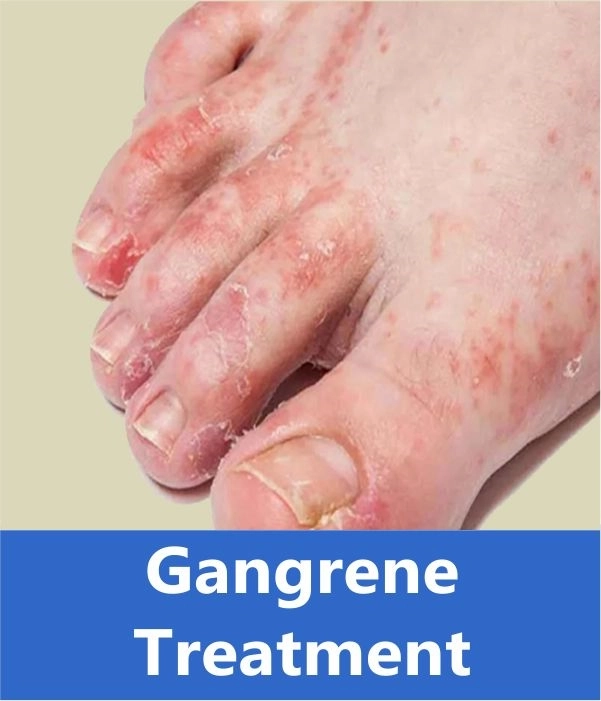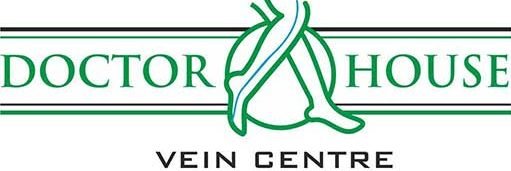

What is Gangrene

Gangrene is defined as a localized death and decomposition of body tissue, resulting from obstructed circulation or bacterial infection. Foot gangrene, as a part of diabetes or atherosclerosis, has become a major medical problem. When gangrene sets in, an amputation needs to be performed.An amputation, one of the oldest surgical procedures, usually refers to the surgical removal of the whole or part of a lower or upper extremity – a foot/leg or a hand/arm. Amputation, however, should be attempted only after all forms of treatment have been exhausted. The vast majority of amputations are performed due to vascular disease. Blockages in the arteries result in insufficient blood supply to the limb.When narrowing or hardening of the arteries becomes severe, gangrene develops and amputation may be the only option Because diabetes can cause vascular blockages, about 30 – 40 percent of amputations are performed in diabetics.
The estimated risk for major amputation in diabetics is 15 to 40 times higher than the general population.In fact, amputations are an extremely feared complication of diabetes as diabetics also often lose their protective sensation and may form ulcerative complications, such as osteomyelitis – an acute or chronic inflammatory process of the bone and its structures. If Gangrene is left untreated – depending on the severity of someone’s condition – infection can develop and threaten the life of the patient. If amputation is not performed, in these circumstances gangrene can be fatal.
How Do You Prevent Gangrene From Occurring?
One of the earliest signs of decreased blood supply to the legs is pain or discomfort in the legs on walking. This pain decreases as soon as the person stops exercise. This is called intermittent claudication and is due to an imbalance between the blood supply to the legs and the demand of the muscles during exercise. As the severity of the blockages increases, the distance that the person can walk decreases. With a severe degree of narrowing of the blood vessels, the person can develop pain in the legs even during rest. If the blood vessel closes completely, and there is inadequate flow via small bypass (collateral) arteries, then the tissue of the legs will die, resulting in Gangrene.
If diagnosed in the early stages, certain medications such as Pentoxyphylline and Cilostazol are used, which help to deliver more blood supply to the tissues. In later stages, with advanced blockages, either an Interventional technique such as Balloon Angioplasty and/or Stent Placement may be used to open up the narrowed and blocked arteries, and to restore blood supply to the legs. With advances in technology and newer equipment, even advanced degrees of blockages can be opened up by these non-surgical techniques in many instances. Sometimes, when Interventional techniques are not feasible, then open Vascular Surgery may be performed using a bypass channel.
It is important to note that once gangrene has developed, then the dead tissue has to be removed surgically. In such cases, the role of Interventional techniques is to restore the blood supply as far as possible and prevent the gangrene from spreading, leading to amputation of a major part of the limb. For example, if the gangrene has already affected the Great toe of the foot, then the great toe will need to be removed surgically. However, opening up the blocked artery below the knee will help to prevent the spread of Gangrene further into the foot; if this occurs, the patient may need either above the knee or below-knee amputation. The purpose of treatment is to save as much of the limb as possible. Blockages of the arteries of the lower limbs may start right from the Abdominal aorta to the vessels of the foot.
The cases outlined below will illustrate the type of blockages which can be treated by Interventional techniques. This treatment is performed in a special laboratory, called the Digital Subtraction Angiography Suite. Most procedures are conducted using a local anesthetic, although in some cases sedation may be used. In the vast majority of cases, the patient may need hospitalization only for a couple of days, for opening up of the arteries. However, if the patient has already developed Gangrene, then treatment of the gangrenous tissue ( if necessary amputation of the affected part) may take a few days more.
Along with Interventional techniques, Hyperbaric Oxygen treatment is also used to increase the blood supply to the affected tissues. In this technique, the patient is placed in a special Hyperbaric Oxygen chamber, and he breathes pure 100% oxygen under pressure for one hour every day. This increases the oxygen content of the blood and delivers increased oxygen to the tissues which are supplied by narrowed or blocked arteries.



